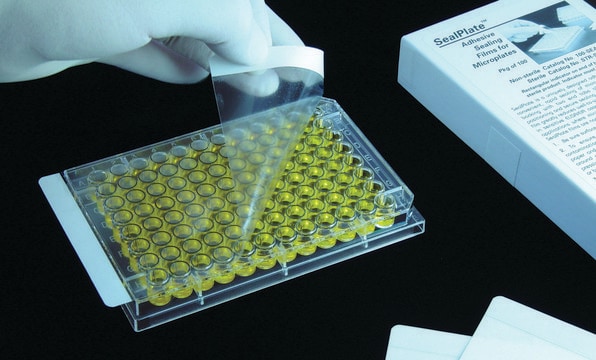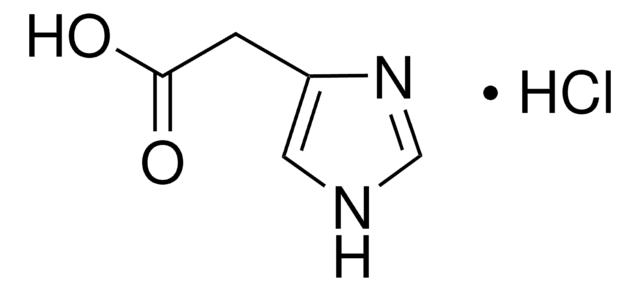D3689
(S)-3,5-Dihydroxyphenylglycine hydrate
≥98% (HPLC), powder
Sinónimos:
S-DHPG
About This Item
Productos recomendados
Quality Level
assay
≥98% (HPLC)
form
powder
storage condition
desiccated
protect from light
color
white
storage temp.
−20°C
SMILES string
O.N[C@H](C(O)=O)c1cc(O)cc(O)c1
InChI
1S/C8H9NO4.H2O/c9-7(8(12)13)4-1-5(10)3-6(11)2-4;/h1-3,7,10-11H,9H2,(H,12,13);1H2/t7-;/m0./s1
InChI key
QZEFIWWBQUKNFA-FJXQXJEOSA-N
Gene Information
human ... GRM1(2911)
Application
- as mGluR1/5 agonist for metabotropic glutamate receptor 1 (mGluR1/5) activation in synaptoneurosomal preparations
- in ACSF for DHPG stimulation
- to inject into basolateral amygdala to study its effect on memory expression
Biochem/physiol Actions
Features and Benefits
Caution
signalword
Warning
hcodes
Hazard Classifications
Eye Irrit. 2 - Skin Irrit. 2 - STOT SE 3
target_organs
Respiratory system
Storage Class
11 - Combustible Solids
wgk_germany
WGK 3
flash_point_f
Not applicable
flash_point_c
Not applicable
ppe
dust mask type N95 (US), Eyeshields, Gloves
Elija entre una de las versiones más recientes:
¿Ya tiene este producto?
Encuentre la documentación para los productos que ha comprado recientemente en la Biblioteca de documentos.
Los clientes también vieron
Contenido relacionado
DISCOVER Bioactive Small Molecules for Neuroscience
Nuestro equipo de científicos tiene experiencia en todas las áreas de investigación: Ciencias de la vida, Ciencia de los materiales, Síntesis química, Cromatografía, Analítica y muchas otras.
Póngase en contacto con el Servicio técnico









